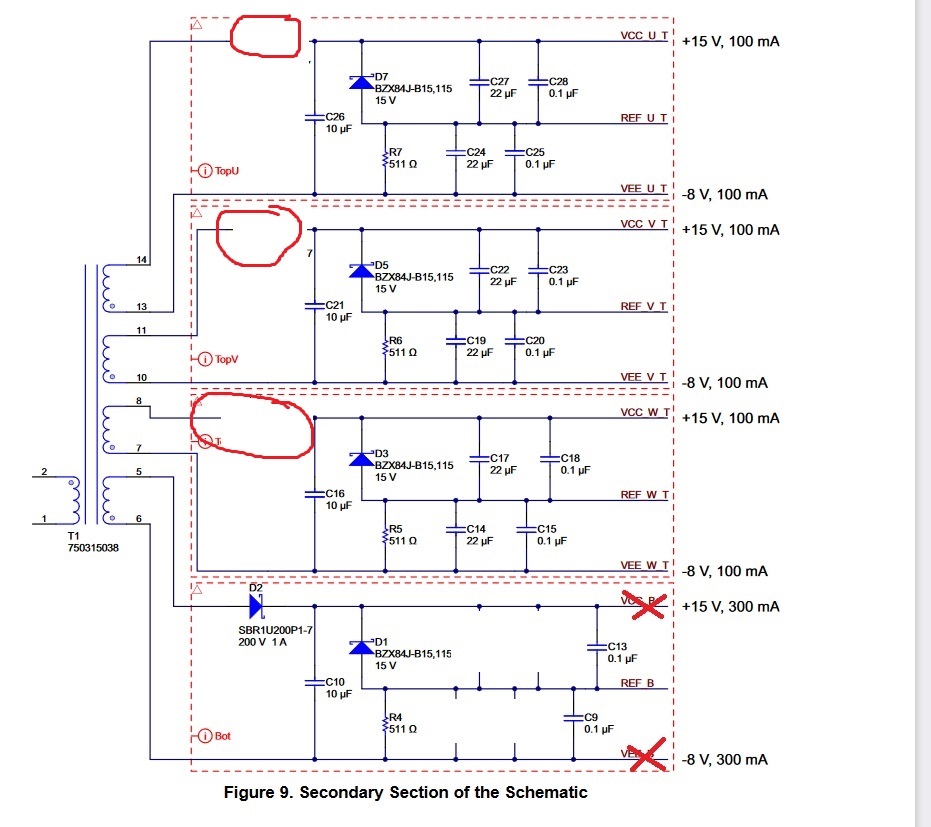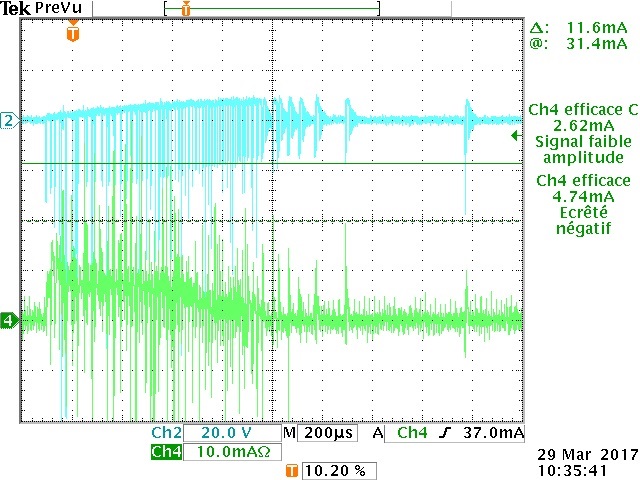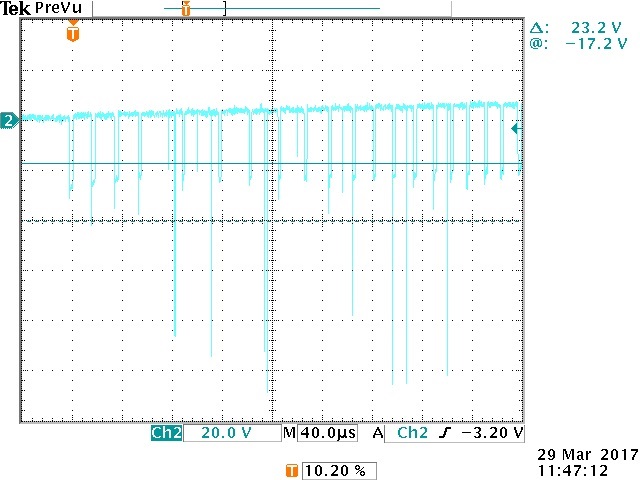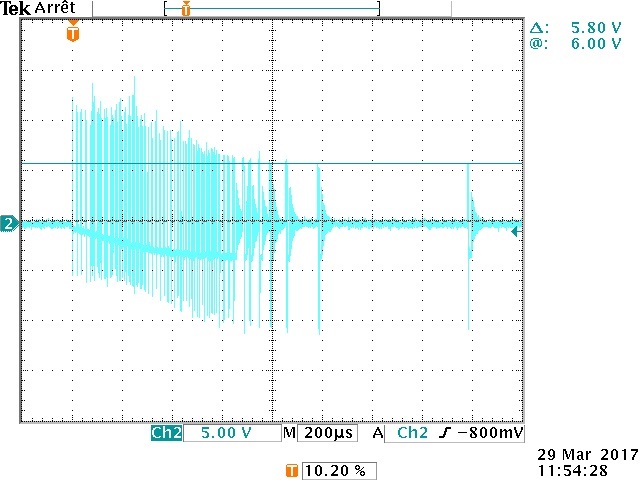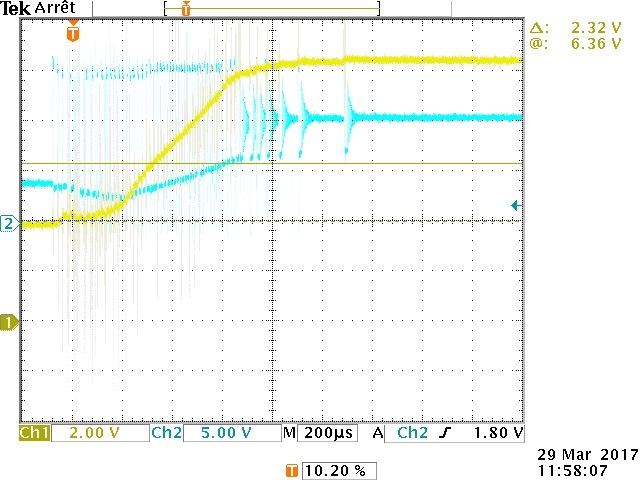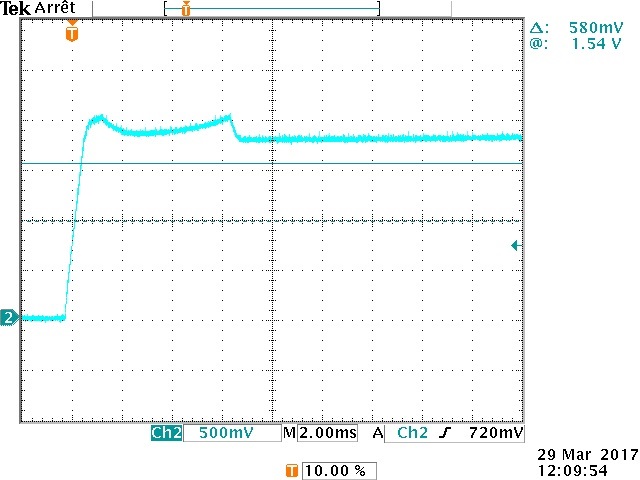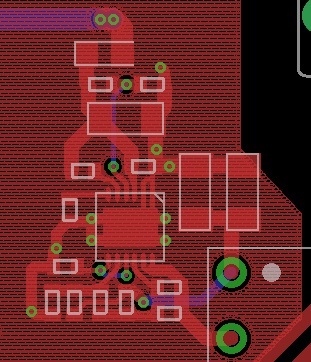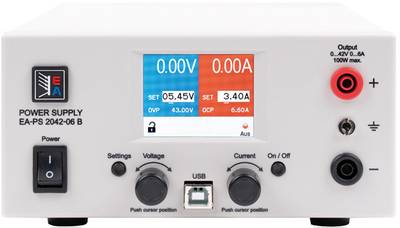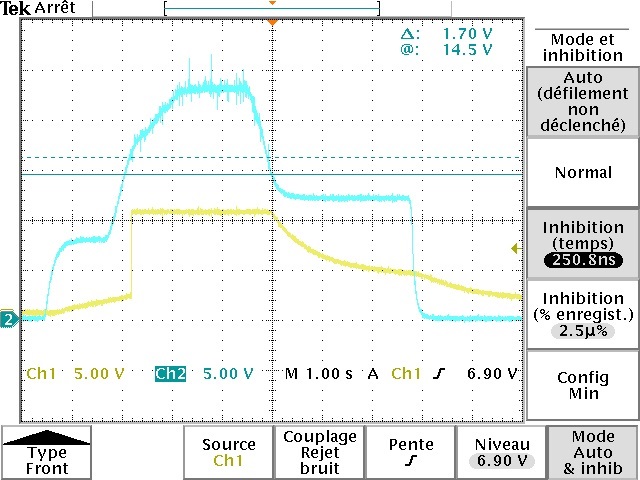Other Parts Discussed in Thread: AMC1304M25, TPS386000
Hello,
We implent the schematic of application note TIDU670a on our custom board.
So, the schematic is excatly the same then the evaluation board.
We have 24V on input Vin, then we produce 3v (+15V/-8V).
Our board is powerd by laboratory power 24V with switch.
But sometime, when we power on the power supply, the output of the schematic (after the transfo) is 1.9V, not 23V (+15/-8)
This occurs some time, and to reproduce it, It switch Off on then switch on the power supply but I think before voltage imput fall to 0.
The problem occurs each time.
To try to understand, I make the following test:
- Power on with Vin=24V => Output = 23V (+15/-8V)
- Down the power supply to 14V with the power supply potentiometer (this could take about 1, 2, 3s to down slowly to 14V) => output power is 1.9V => this is Ok, the LM5160 shutdown.
- Now, increase power supply up to 24V => the output stay to 1.9V, the LM5160 not start again to produce the power output 23V (15-98V).
I hope i'm clear, the question is: What could be the reasons makes the LM5160 not start properly?
Thank


